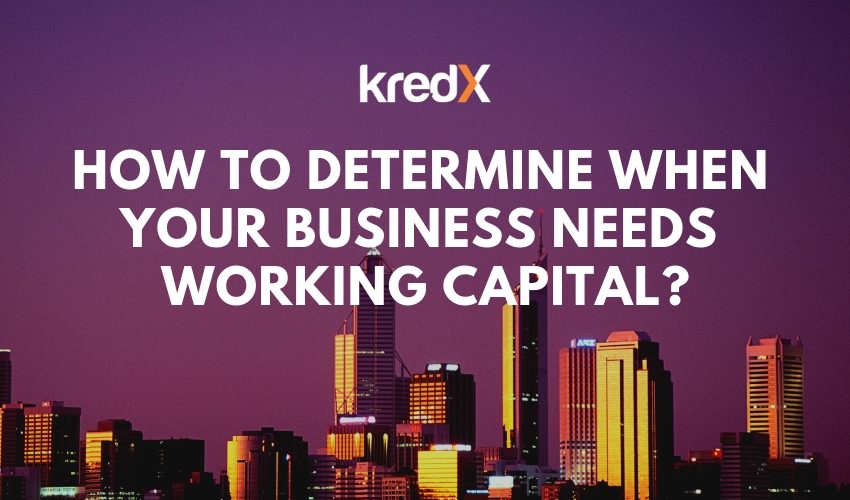
How to determine working capital needs for my business?
The total amount by which current assets exceed current financial liabilities is called working capital. The formula to calculate working capital is Working capital = Current Assets – Current Liabilities. The need for working capital in a small or medium enterprise can be identified by the following factors.
1. Sales: Size of sales is one of the most important factors as compared to others for determining the amount of working capital that is required. The enterprise needs to maintain the current assets of the company to increase the volume of sales in the company. Over some time, a company comes to a position where it can maintain a steady ration of its current assets to annual sales. Due to this, the turnover ratio which means the increase of current assets to turnover, thus reducing the length of the operating cycle. Meaning that lesser the operating cycle period less will be requirements for working capital and vice versa.
2. Length of the operating cycle: ‘Length of operating cycle’ is the conversion of cash through various stages like raw material, semi-processed goods, the final product, sales, debtors and bills receivables into cash over a period of time. The requirement of working capital increases with the increase in the duration of the operating cycle. For example, a rice mill or cotton spinning mill will need lesser working capital as compared to products that need heavy engineering. Hence, the need for working capital varies from company to company depending upon the length of the working cycle.
3. Nature of business: The need for working capital also varies from company to company depending upon their nature of the business. For example, manufacturing companies require less working capital than trading companies. The reason for this is that a trading company requires huge massive quantities of goods to be held in stock along with carrying large amounts of working capital than concerns about manufacturing.
Both these businesses have their current value assets at 80% to 90% of the value of total assets. In the case of hotels and restaurants, the investment in current assets is relatively smaller as they usually have cash sales and a small amount of debtors’ balance.
4. Terms of credit: The term of credit allowed to the customer is another significant factor in determining working capital. For example, a company may provide only 15 days credit whereas another company may allow a credit of 90 days to its customers. There can be cases where an organisation provides credit only to reliable and selected customers or there can be an organisation which extends credit facility to all its customers.
If the credit facilities are extended to all customers and the duration of the credit period is longer, it automatically increases the need for working capital. This occurs because the balances of debtors will be longer and for a longer period of time. This will further demand more capital.
The requirement for working capital will be comparatively smaller as the payment will be made after a relatively a longer period if the supplies of raw materials are available on favourable conditions or terms of credit.
5. Seasonal variations: For those enterprises whose business depends on the season may need more working capital to meet their increased operations in a particular season. One such example would be sugar factories whose business are very seasonal.
6. Turnover of inventories: When the turnover for large inventories is slow, a company needs more working capital. On the other hand, if inventories are small but still have a quick turnover, the amount of working capital needed by the company will be small in size.
7. Nature of production technology: If technology is labour intensive then the entire unit will need more working capital as the company will have to pay the wages to everyone. If a production company has a technology which uses more bots, the expenses of wages are cut down resulting to a lesser amount of working capital.
8. Contingencies: If there is a fluctuation in the demand and price of a product of a small-scale enterprise, the contingency provisions will have to be made for meeting the fluctuations. This will result in an increase in the requirement of working capital.
While these are just some of the factors that determine the need for working capital, there are many other underlying factors that can be added to the list. Working capital is an essential component in running the company and identifying the need for it at the correct time is critical.



